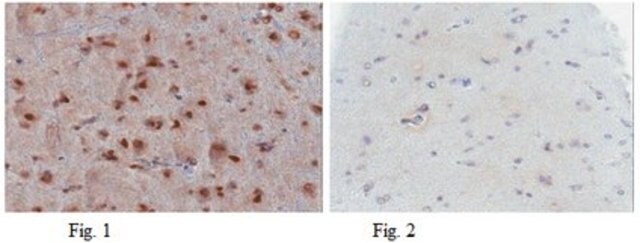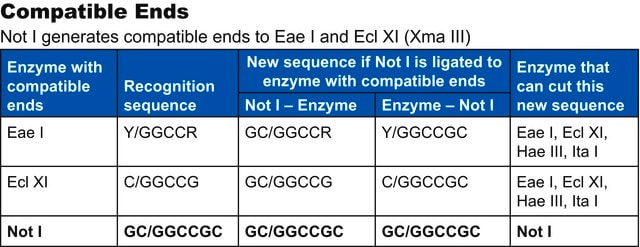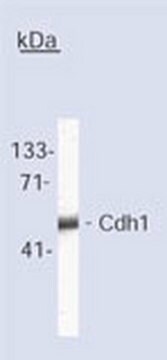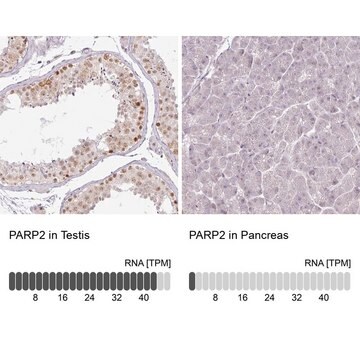R8381
Dpn I from Diplococcus pneumoniae
Restriction Enzyme
Sign Into View Organizational & Contract Pricing
All Photos(1)
About This Item
CAS Number:
MDL number:
UNSPSC Code:
12352204
Recommended Products
grade
for molecular biology
form
buffered aqueous glycerol solution
concentration
10,000 units/mL
shipped in
wet ice
storage temp.
−20°C
Specificity
Recognition sequence: 5′-GmA/TC-3′
Ligation and recutting results: After 2-10-fold Dpn I overdigestion of 1 μg pBR322 DNA substrate, results in 100% cutting, >30% of fragments can be ligated, and >90% recut.
Heat inactivation: 75 °C for 15 minutes.
Ligation and recutting results: After 2-10-fold Dpn I overdigestion of 1 μg pBR322 DNA substrate, results in 100% cutting, >30% of fragments can be ligated, and >90% recut.
Heat inactivation: 75 °C for 15 minutes.
Application
DpnI is a restriction endonuclease that is used in molecular biological applications to cleave the recognition sequence 5′-GmA/TC-3′, generating DNA framents with blunt ends.
Other Notes
Supplied with 10x Restriction Enzyme Buffer SA (B7531).
Comment: Since Dpn I will completely cleave only fully methylated pBR322 DNA, cleavage of 95% or more is considered complete digestion.
Physical form
Solution in 10 mM Tris-HCl, pH 8.0, 400 mM NaCl, 0.1 mM EDTA, 1 mM dithiothreitol, 200 μg/ml BSA, 50% glycerol (v/v) at 4 °C
incubation buffer
Product No.
Description
Pricing
related product
Storage Class
10 - Combustible liquids
wgk_germany
WGK 1
flash_point_f
Not applicable
flash_point_c
Not applicable
Choose from one of the most recent versions:
Already Own This Product?
Find documentation for the products that you have recently purchased in the Document Library.
S Lacks et al.
The Journal of biological chemistry, 250(11), 4060-4066 (1975-06-10)
A deoxyribonuclease specific for methylated DNA was isolated from Diplococcus pneumoniae. The enzyme, an endonuclease, degrades DNA for Escherichia coli to fragments of average molecular weight about half a million; it forms discrete fragments from phage lambda DNA. Methyl-deficient E.
Min Ju et al.
The Journal of biological chemistry, 278(15), 12769-12778 (2003-02-01)
The human and rat forms of the Kv2.1 channel have identical amino acids over the membrane-spanning regions and differ only in the N- and C-terminal intracellular regions. Rat Kv2.1 activates much faster than human Kv2.1. Here we have studied the
K Alheim et al.
Journal of molecular endocrinology, 30(3), 359-368 (2003-06-07)
Glucocorticoids are known regulators of the cell cycle, normally exerting an anti-proliferative effect. We have previously shown that glucocorticoids stimulate expression of p57(Kip2), a member of the Cip/Kip family of cyclin-dependent kinase inhibitors which, in some cell types, may account
C Kessler et al.
Gene, 92(1-2), 1-248 (1990-08-16)
The properties and sources of all known class-I, class-II and class-III restriction endonucleases (ENases) and DNA modification methyltransferases (MTases) are listed and newly subclassified according to their sequence specificity. In addition, the enzymes are distinguished in a novel manner according
Cong Zhu et al.
Nucleic acids research, 41(4), 2455-2465 (2013-01-11)
Zinc-finger nucleases (ZFNs) have been used for genome engineering in a wide variety of organisms; however, it remains challenging to design effective ZFNs for many genomic sequences using publicly available zinc-finger modules. This limitation is in part because of potential
Our team of scientists has experience in all areas of research including Life Science, Material Science, Chemical Synthesis, Chromatography, Analytical and many others.
Contact Technical Service








